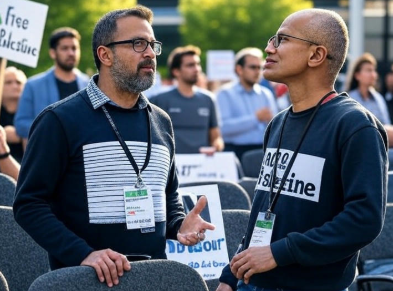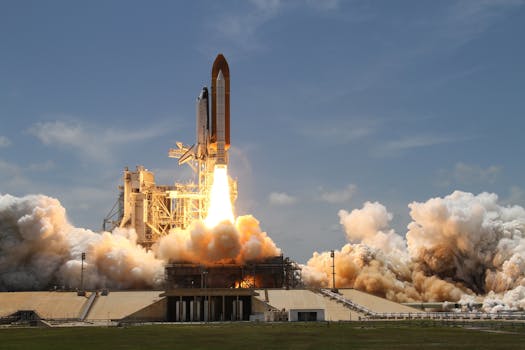In a groundbreaking announcement on March 25, 2025, OpenAI introduced native image generation capabilities for its GPT-4o model, marking a significant leap forward in the evolution of artificial intelligence. This update, rolling out across ChatGPT and Sora platforms, promises to seamlessly blend text and visual creation, offering users an unprecedented level of control and creativity. With this development, OpenAI is not just enhancing its flagship model—it’s redefining how we interact with AI, bringing us closer to a future where machines can think, communicate, and create in ways that mirror human ingenuity.
A Multimodal Milestone
OpenAI’s GPT-4o, first unveiled in May 2024 as a multimodal powerhouse capable of processing text, images, and audio, has now taken a bold step into image generation. Unlike its predecessors, which relied on separate models like DALL-E 3 for visual output, GPT-4o now integrates this capability natively. This means the same AI that chats with you can also craft detailed, context-aware images based on your conversation—no context-switching required. The update is live today for ChatGPT Plus, Pro, Team, and Free users, with Sora integration following suit. Enterprise, Education, and API access are slated to roll out in the coming weeks.
According to OpenAI, GPT-4o’s image generation excels at three key feats: accurately rendering text within visuals, precisely following complex prompts, and leveraging the model’s inherent knowledge base and chat history. This isn’t just about slapping words onto a picture or churning out generic artwork. It’s about creating images that feel intelligent—ones that understand your intent, adapt to your refinements, and maintain consistency across iterations.
What Sets GPT-4o Apart?
The magic of GPT-4o lies in its training. OpenAI has engineered this model on a joint distribution of text and images, allowing it to grasp the intricate relationships between language and visuals. The result? A system that can generate photorealistic scenes, intricate diagrams, or stylized illustrations with a level of fidelity that outshines earlier efforts. For instance, ask it to design a restaurant menu, and it won’t just draw a pretty picture—it’ll include legible text, accurate pricing, and a layout that makes sense, all tailored to your specifications.
One standout feature is its ability to handle multi-turn conversations. Imagine designing a video game character: you describe a warrior in a blue cape, then ask for a sword in their hand, then tweak the cape to red—all within the same chat. GPT-4o remembers the context, ensuring the character stays consistent rather than starting from scratch each time. This iterative refinement, paired with its capacity to manage up to 20 distinct objects in a single image, sets it apart from past models that stumbled over complex compositions.
The model also shines in practical applications. It can whip up scientific diagrams with labeled parts, comic strips with coherent characters, or marketing assets with transparent backgrounds—all in under a minute, though the detailed rendering process takes slightly longer than older, less precise systems. For businesses, educators, and creators, this opens a world of possibilities, turning ChatGPT into a one-stop creative hub.
Safety and Transparency at the Forefront
With great power comes great responsibility, and OpenAI is keenly aware of the risks tied to advanced image generation. To address concerns about misuse—think deepfakes or copyrighted content theft—GPT-4o embeds all generated images with C2PA metadata, a digital fingerprint that marks them as AI-crafted. The company has also implemented robust safety filters, blocking requests for harmful content like violence or explicit imagery, while an internal search tool helps verify the origin of questionable visuals.
Striking a balance between creativity and caution, OpenAI aims to support valuable use cases—think game design, historical recreations, or educational tools—while keeping strict guardrails in place. This approach reflects lessons learned from past controversies in the AI art space, where companies faced backlash over training data ethics and output misuse. While OpenAI remains tight-lipped about the specifics of GPT-4o’s training data, it’s likely a mix of public and proprietary sources, refined to respect intellectual property and prioritize user safety.
A Game-Changer for Creators and Beyond
The implications of this update are vast. For content creators, GPT-4o offers a fluid, conversational way to brainstorm and produce visuals—no need to juggle multiple tools or wrestle with clunky interfaces. A graphic designer could sketch out a logo idea in words, tweak it live, and export a polished version, all without leaving ChatGPT. Educators might generate custom infographics to explain complex concepts, while marketers could churn out branded assets on the fly.
But it’s not just about pretty pictures. By integrating image generation into GPT-4o, OpenAI is pushing the boundaries of multimodal AI, where text, visuals, and potentially other data types (like audio or video, hinted at in Sora’s evolution) converge into a cohesive experience. This could pave the way for AI that doesn’t just assist but collaborates—think of it as a creative partner that understands your vision and builds on it in real time.
The rollout also signals a competitive shot across the bow. Just days ago, Google’s Gemini 2.0 Flash introduced similar image generation features, sparking a flurry of online buzz. OpenAI’s response? A system that users on X are already calling “insane” and “a Midjourney killer,” citing its photorealistic output and text precision. Whether it truly outclasses rivals remains to be seen, but the early demos—shared during a livestream led by CEO Sam Altman—suggest a leap that’s both functional and fun.
Challenges and the Road Ahead
Of course, no innovation is flawless. OpenAI acknowledges that GPT-4o has quirks to iron out. It sometimes crops long images awkwardly, struggles with non-Latin text, or hallucinates details when prompts get vague. Editing specific parts of an image can also ripple into unintended changes elsewhere. These are growing pains, not dealbreakers, and OpenAI plans to refine the model post-launch based on user feedback.
The bigger question is cultural: will people embrace this? For every artist thrilled by the possibilities, there’s another wary of AI encroaching on human creativity. The debate over AI-generated art—its ethics, its value, its impact on jobs—won’t end here. Yet OpenAI seems to wager that utility will win out, especially as GPT-4o shifts image generation from a novelty to a practical tool.
The Future Is Visual—and Conversational
As of 9:36 PM PDT on March 25, 2025, GPT-4o’s image generation is already making waves. Free users can experiment alongside paid subscribers, a move that democratizes access and invites a flood of real-world testing. Developers, meanwhile, await API access to weave this tech into their own apps, potentially sparking a new wave of AI-driven innovation.
This isn’t just an upgrade—it’s a glimpse into a multimodal future where AI doesn’t just talk or write, but sees and creates alongside us. OpenAI’s GPT-4o is no longer content to be a chatbot; it’s aiming to be a creative companion, a visual storyteller, and a problem-solver rolled into one. As Altman put it during the announcement, “This is one of the most fun things we’ve ever launched.” If the early buzz is any indication, he’s not wrong—and the world is about to get a lot more colorful.



